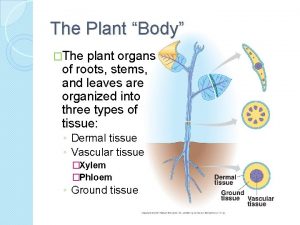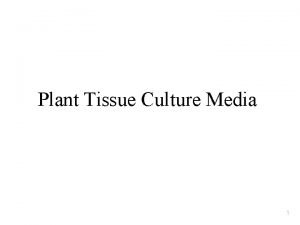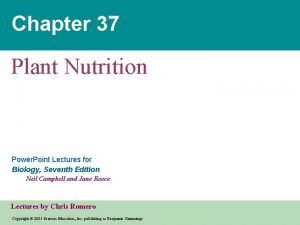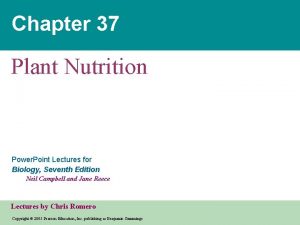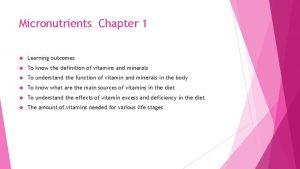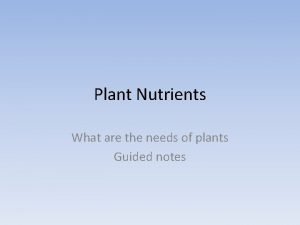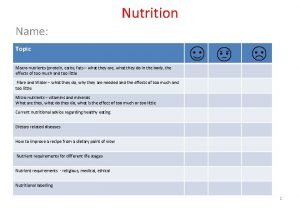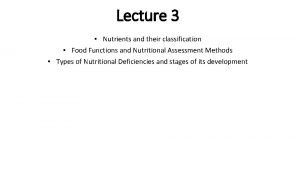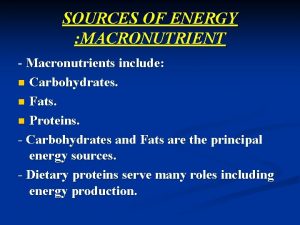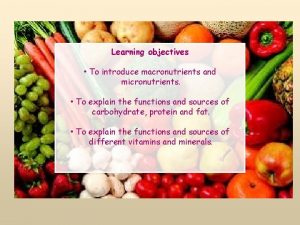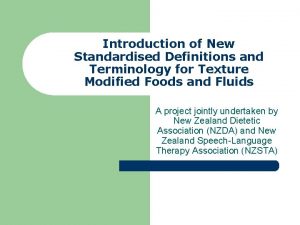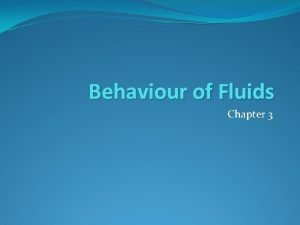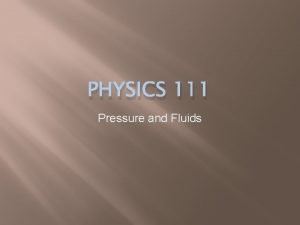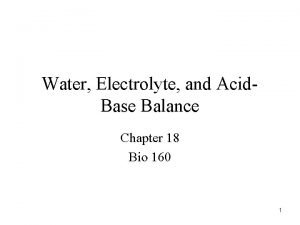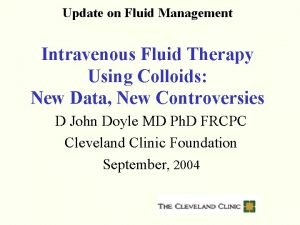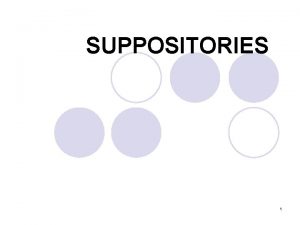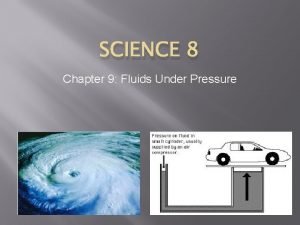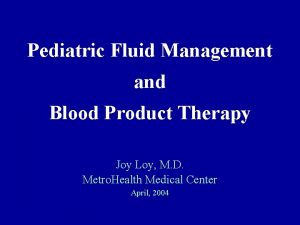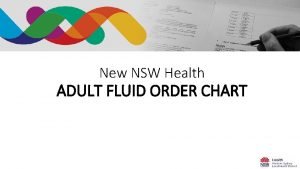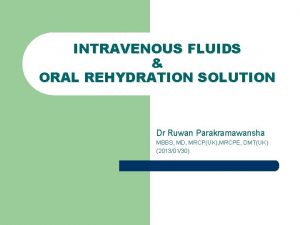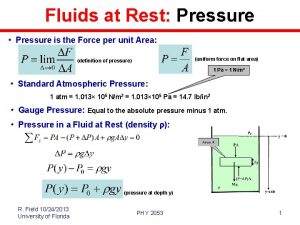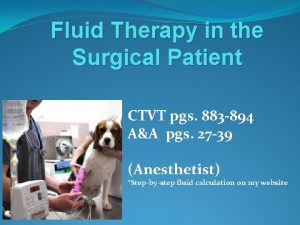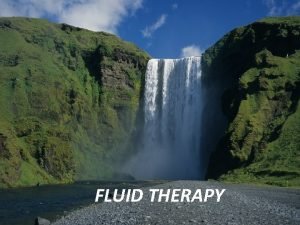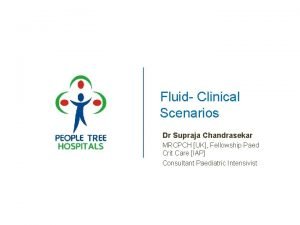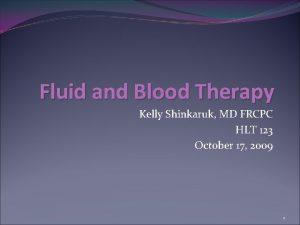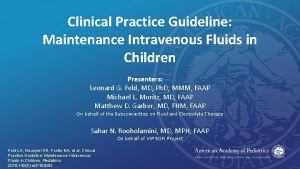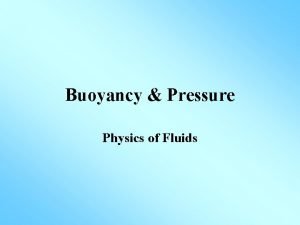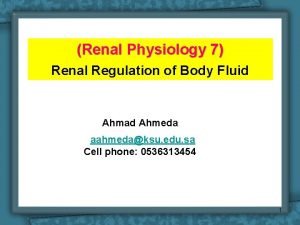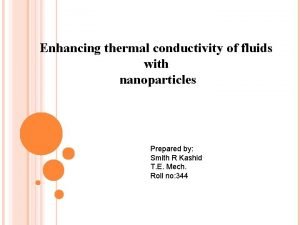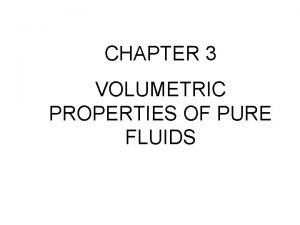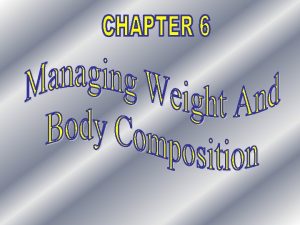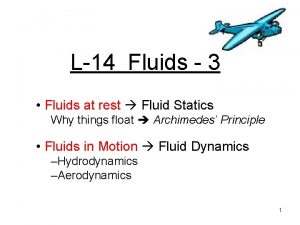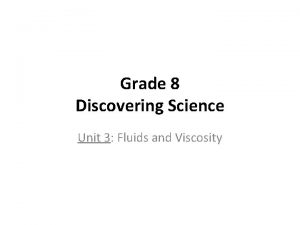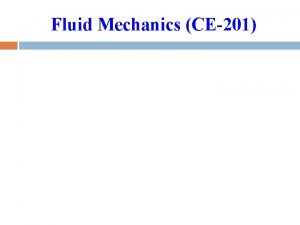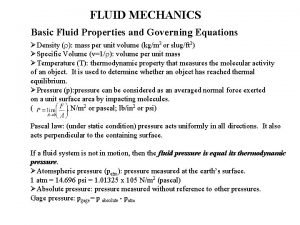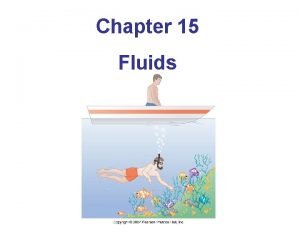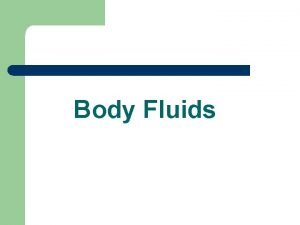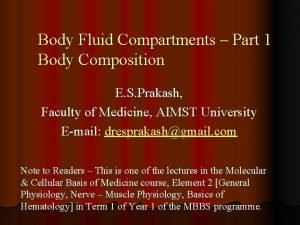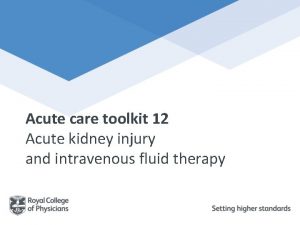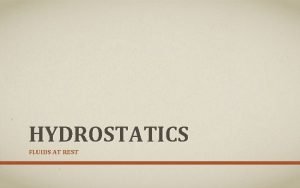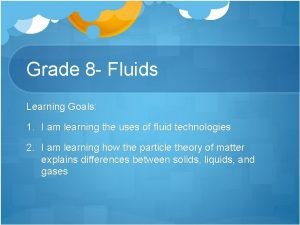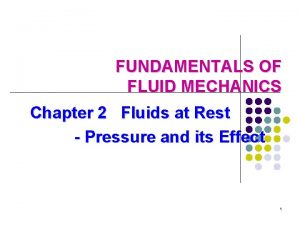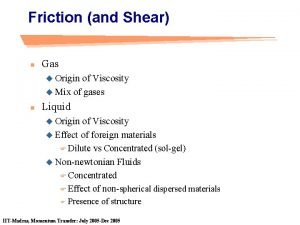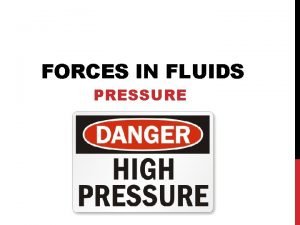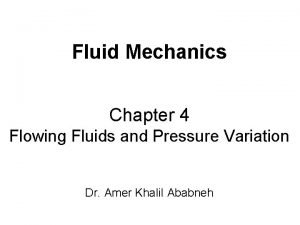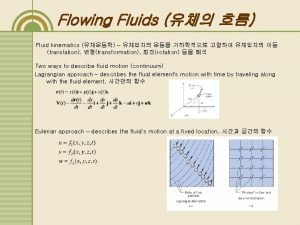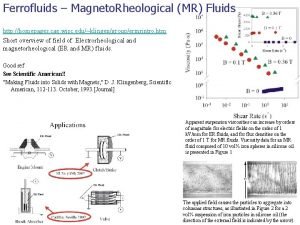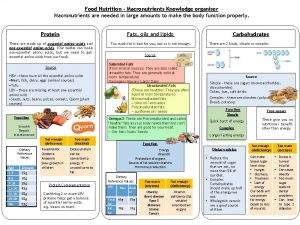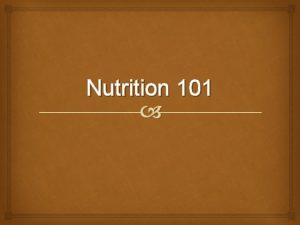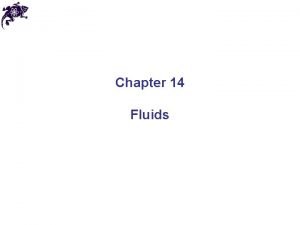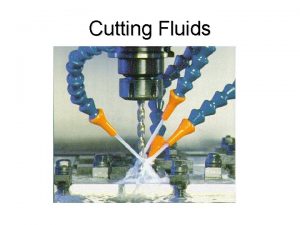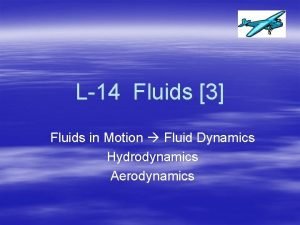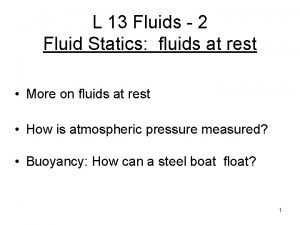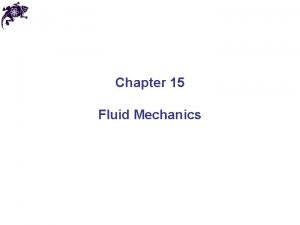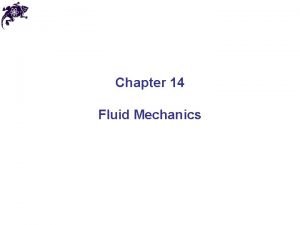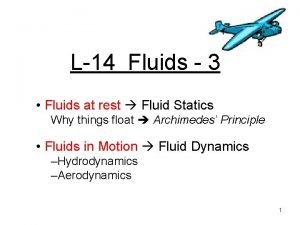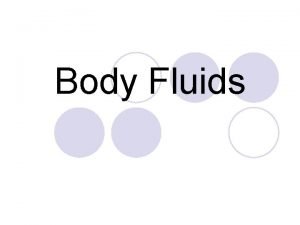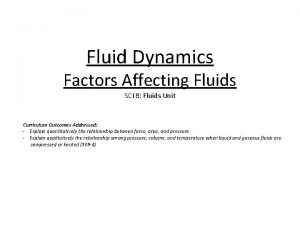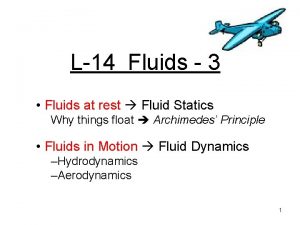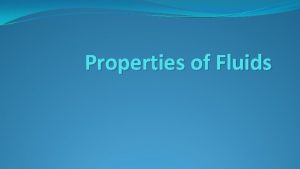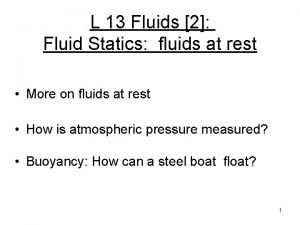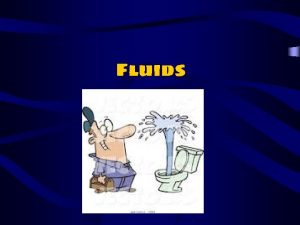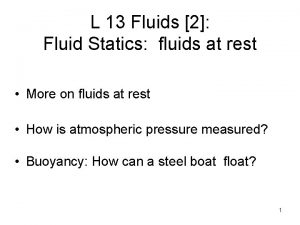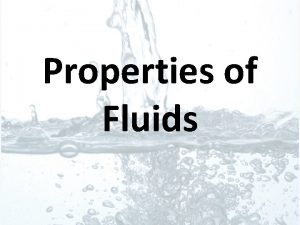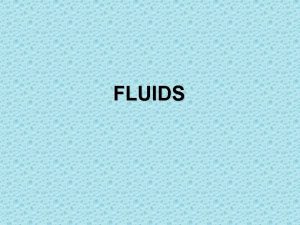Fluid and Macronutrients Aim Contents Fluids and fluid





































































- Slides: 69

Fluid and Macronutrients

Aim

Contents • Fluids and fluid balance • Carbohydrates • Fats • Proteins

Fluid balance is essential to life Fluid: • Acts as a solvent for ions and molecules • Acts as a transport medium • Acts a a lubricant • Regulates body temperature

Body water 1. Intracellular 2. Extracellular • Interstitial fluid • Plasma volume Focus on extracellular when providing clinical care

Regulation of fluid balance • Under very tight homeostatic control • Total volume fluctuates by less than 1%/day • Changes of 1 -2% can lead to illness and death

What affects fluid movement? • Variety of sensitive and highly complex mechanisms • Osmosis and hydrostatic pressure gradients • Sodium and Potassium • Normally – osmolality of plasma and interstitial fluids are equal

Plasma osmolality • Key factor in determining fluid movements • Slight changes in osmolality corrected by moving fluid between interstitial compartment and plasma • If osmolality increases- hypothalamus stimulated by thirst and increased ADH released • See reabsobtion of water from distal renal tubules and correction of osmolality • Decreased plasma volume also leads to rise in osmolality- Aldosterone is released resulting in increased Sodium and water retention

Important Clinical points • Renal function is key factor in regulation of fluid balance – impairment characterised by oedema • Thirst and age • Severely disturbed osmolality or volume depletion lead to the movement of fluid between intracellular and extracellular components – has fatal consequences if not treated promptly

Factors affecting fluid balance Fluid and Food intake – Healthy adult body requires approx: 3 L / day – 1. 5 L from fluid – 1 L from food – 300 ml metabolic processes

Fluid output Controlled by kidneys – plus “insensible” losses from skin, lungs and Gastrointestinal tract (GI) • Lungs – 400 ml lost / day in normal respiration (consider patients with hyperventilation) • Skin – lose 500 -750 ml / day normally ( increases when BMR increases In pyrexia – for every 1 degree rise in body temp need additional 500 ml / day • GI – loses high in diarrhoea and vomiting (short bowel syndrome)

Fluid requirements • Minimum intake – to replace all losses and provide adequate dilution for excretion of solutes via kidneys • Maximum intake from oral liquids – that which kidneys can excrete

Monitoring Fluid Balance • Important consideration in assessment of all patients • Fluid status of some patients will need very close monitoring (input and output charts and evaluation of blood – particularly Sodium and osmolality)

People at Risk of negative fluid balance (dehydration) • Critically ill • Patients given inappropriate nutritional or hydration support • Acute dehydration –in high fluid losses (life threatening in young children and frail elderly) • Chronic dehydration – results in constipation, headaches, lethargy, mental confusion and Urinary tract infections

Chronic dehydration

Fluid overload • Impaired cardiac , hepatic or renal function • Fluid restriction integral part of treatment

Fluids – the acute medical perspective • Renal function • Constipation • Urinary tract infections • Glycaemia

Fluids in hospital • 6 cups of tea / coffee (180 ml each) • Water jug

Fluids – the public health medicine perspective • Obesity • Dental health • Cancer • Osteoporosis



Fluids – some specifics • Water (flat and plain) and milk • Fruit juice based • Carbonated drinks • Milk shakes • Tea and coffee

Personal clinical favourites

A quick recap….

Carbohydrates • DOH recommend provides 50% of energy

Function of Carbohydrates • Energy – all carbs converted into glucose • Glucose vital fuel substrate for all body tissues (especially brain) • Blood glucose levels tightly maintained to meet fuel demands

After eating carbohydrate… • Blood glucose levels rise • Increased production of insulin • Increased cellular uptake of glucose • In body cells glucose oxidised as source of energy • Surplus glucose stored as glycogen – in liver and skeletal muscle • When glycogen stores saturated – glucose converted to fat and stored in adipose tissue

Dietary carbohydrates • Produced by plant synthesis of carbon dioxide and water (glucose) • Glucose converted into other sugars and starches (provide energy) • Glucose converted into cellulose and other non-starch polysaccharides (structure)

Available dietary carbohydrate 1. Sugars -Monosaccharide's (glucose, fructose and galactose) - Disaccharides (sucrose, lactose and maltose) 2. Starches (polysacharides)


Non-starch Polysacharides • Viscous polysaccharides blunt post prandial blood glucose responses • Viscous polysaccharides reduce total cholesterol (reduce LDL component) • Reduce gut transit time and increase stool weight

Foods high in NSP • Peas, beans, lentils • Sprouts, parsnips, spring greens • Granary, wholemeal bread and rye bread • Wholemeal pasta • Muesli and bran based breakfast cereals


Health implications of Carbohydrates • “Natural” sugars (fruit, veg and milk ) Contain vitamin C, beta-carotene, calcium and soluble fibre) • Starches – B vitamins, minerals, protein and fibre • “unnatural” sugars – fat and calories!

Carbohydrate in the UK diet DOH Target 50% energy • 39% energy from natural sugars and starches • 11% energy from added sugar What we eat: 44% energy from carbohydrates 27% from natural sugars and starches 17% from added sugar

Carbohydrates the acute medical perspective • Diabetes mellitus – dose of hypoglycaemic agents is tailored to intake of starches and natural sugars • Constipation • Carbohydrate intolerances – lactose intolerance, sucrose intolerance, starch intolerance, monosaccharide intolerances

Carbohydrates the acute medical perspective • Easily absorbed and palatable calories • Number of “supplements” available • Oral hygiene is important

Carbohydrate supplements

Carbohydrates the public health medicine perspective • Obesity • Cancer • Constipation (fluid) • Oral health

A quick recap

Dietary Fats • DOH recommend 35% daily kcal's from fat 13% from monounsaturated fat 6% from polyunsaturated 11%from saturated fat We eat 40% daily calories from fat 12% from monounsaturated fat 6% from polyunsaturated 17%from saturated fat


Function of fats • Fuel for cells • Providing essential fatty acids • As a carrier for fat soluble vitamins • Insulation against heat loss • Providing a protective layer around essential organs • A structural component of brain tissue and myelin sheaths • Forming phospholipids • Substrate for hormone and prostaglandin synthesis • Body store of energy (adipose tissue)

Dietary fat • Saturated fats Storage fats of animals Meat fat Lard Butter Cheese cream

Polyunsaturated fats • Linoleic acid (omega 6) Sunflower, safflower, corn, palm, soya • Alpha-linolenic acid (omega 3) (EPA) Fish oils (DHA) Fish oils


Monounsaturated fats • Olive oil and rapeseed oil • Nuts and seeds • Present in lean meat e. g. 100 g beef - 1. 4 g saturated fat - 2. 3 g monounsaturated fat

Fat in the UK diet Very high fat foods (above 20 g / portion) Pizza Pilau rice Fried rice Chips Cauliflower cheese Cheese omelettes Fatty meat Poultry with skin Meat curries sausages Pies, puddings, pasties, sausage rolls, quiche Fried food Pastry / tarts 200 kcals from fat

Fat in the UK diet High fat foods 10 -20 g/portion Bread with thick spread Fruit pies and flans Double / whipping cream Full fat cheeses Poultry breast meat Red meat with marbling Beef burgers Luncheon meat Omelettes, fried eggs Scampi Peanuts Mayonnaise Chocolate Sponge puddings, trifles, cakes

How will we achieve Govt. guidelines on fat? • Cook from scratch • Eat at home more • Eat less fat rich foods (pies, cakes, chocolates) • Avoid obvious sources of fat • Use minimal fat in cooking and on/in food • Use lower fat dairy products

Fat – the acute medical perspective • Surgical outcomes poorer in obese • Infertility / poor pregnancy outcomes • Fat low satiety, taste enhancing – useful in treating energy malnutrition (underweight, renal patients, cancer patients)

Clinical fat supplements

Fat – the public health perspective • Obesity • Cardiovascular disease • Cancers

A quick recap….

Proteins • Vital for structure and metabolic operation of body • Major component of body tissues – essential for growth and maintenance of body structures • Production of enzymes • Transporters • Hormones • Immune function • Buffering function • Energy source when energy insufficiency

Structure of proteins • Made of chains of amino acids • Dipeptides, tripeptides, oligopeptides, Polypeptides • Dietary proteins are broken down by digestive enzymes • Some enter the body amino acid pool • Others transaminated into other amino acids • Surplus are deaminated – the amino acids converted to urea – excreted via the kidneys

Amino acids • Some essential • Some semi-essential • Some conditionally essential in critically ill

Essential amino acids • Some amino acids can’t be synthesized by the body – called essential amino acids • - 9 essential in adults and 10 in children Isoleucine Leucine Valine Lysine Methionine Phenylalanine Threonine Tryptophan Histidine (arginine)

Semi-essential amino acids • Can be readily synthesized from other amino acids provided that precursors amino acids are present in diet in large enough amounts • Cysteine • Tyrosine

Conditionally essential • Glutamine and Arginine are thought to be conditionally essential in critically ill people

Protein requirements • Continuous requirement for new sources of protein • In childhood and pregnancy higher requirements • Body designed to conserve proteins • Synthesis of protein takes place in all cells and tissues

Protein requirements • 200 -300 g protein turned over daily • Body's requirement is 3 -4 g / kg body weight • Requirements higher in children and lower in elderly • In trauma and starvation see negative protein balance

Protein in the UK diet (g per day) • 24 g from meat and meat products • 17 g from cereals • 14 g from milk and milk products • 7 g from vegetables • 4 g from fish • 2 g from eggs • 1 g from fruit

Protein – the acute medical perspective • Protein deficiency due to inadequate energy intake • Catabolic response to trauma • Failure to absorb or utelize protein (GI disorders, liver disease) • Excessive protein loss – renal disease, haemorrhage, exudative loses Poorer clinical outcomes

Protein - the acute medical perspective • Muscle wasting – heart • Increased susceptibility to infection • Poor wound healing • Oedema • Anaemia • Fatty infiltration of the liver

Protein supplements

Protein – the public health perspective Obesity Cardiovascular disease Cancer Renal function Demineralisation of bones

What we have talked about…. • Fluids and fluid balance • Carbohydrates • Fats • Proteins

A final thought from the BMJ Poor lifestyle choices – overweight, inactive and smoking reduce life expectancy by a minimum of 15 years
 Macronutrients and micronutrients in plants
Macronutrients and micronutrients in plants Auxin in tissue culture
Auxin in tissue culture Macronutrients and micronutrients in plants
Macronutrients and micronutrients in plants Macronutrients and micronutrients in plants
Macronutrients and micronutrients in plants Macronutrients and micronutrients
Macronutrients and micronutrients Macronutrients elements
Macronutrients elements 6 macronutrients
6 macronutrients Deficiency chart of macronutrients
Deficiency chart of macronutrients Classification of food nutrients
Classification of food nutrients Importance of carbohydrates
Importance of carbohydrates Learning outcomes should be
Learning outcomes should be Body fluid compartments
Body fluid compartments Movement of body fluids
Movement of body fluids Buoyancyability
Buoyancyability Compressible and incompressible fluids
Compressible and incompressible fluids Australian standards for texture modified foods and fluids
Australian standards for texture modified foods and fluids Compressible and incompressible fluids
Compressible and incompressible fluids Why are liquids incompressible
Why are liquids incompressible Physics fluids practice problems
Physics fluids practice problems Chapter 18 fluids and electrolytes
Chapter 18 fluids and electrolytes Is synovial fluid extracellular fluid
Is synovial fluid extracellular fluid Fluid statics deals with fluid at rest
Fluid statics deals with fluid at rest Fluid statics deals with fluid at rest
Fluid statics deals with fluid at rest Interstitial fluid vs extracellular fluid
Interstitial fluid vs extracellular fluid Interstitial fluid vs extracellular fluid
Interstitial fluid vs extracellular fluid Timeline in fluid mechanics
Timeline in fluid mechanics Fluid thrill and shifting dullness
Fluid thrill and shifting dullness 4/2/1 rule
4/2/1 rule Evaluation test for suppositories
Evaluation test for suppositories Science 8- fluids under pressure worksheet answer key
Science 8- fluids under pressure worksheet answer key Pediatric maintenance fluids 4-2-1 rule
Pediatric maintenance fluids 4-2-1 rule Pediatric fluids 4 2 1
Pediatric fluids 4 2 1 Iv fluid order
Iv fluid order Hypotonic iv solution
Hypotonic iv solution Examples of fluid statics
Examples of fluid statics Colloid fluids
Colloid fluids Crystalloid fluids examples
Crystalloid fluids examples 4/2/1 rule
4/2/1 rule 4-2-1 rule
4-2-1 rule 421 rule maintenance fluids
421 rule maintenance fluids Euler's momentum equation
Euler's momentum equation Hypotonic fluids
Hypotonic fluids Calculating buoyant force
Calculating buoyant force 4 2 1 rule
4 2 1 rule Regulation of body fluids
Regulation of body fluids Colloids fluids examples
Colloids fluids examples Enhancing thermal conductivity of fluids with nanoparticles
Enhancing thermal conductivity of fluids with nanoparticles Fluid flow classification
Fluid flow classification Volumetric properties of pure fluids
Volumetric properties of pure fluids What is the upward force that fluids exert on all matter
What is the upward force that fluids exert on all matter The way you see your body is
The way you see your body is Static fluids
Static fluids Fluids mechanics
Fluids mechanics Heavy object
Heavy object Example of fluid
Example of fluid Absolute viscosity formula
Absolute viscosity formula Pressure gradient fluid mechanics
Pressure gradient fluid mechanics Static fluids
Static fluids Static fluids
Static fluids Extracellular fluid contains
Extracellular fluid contains Dilution principle of measuring body fluids
Dilution principle of measuring body fluids Classification of iv fluids
Classification of iv fluids Fluids at rest
Fluids at rest Fluids grade 8
Fluids grade 8 Manometer formula
Manometer formula Power law fluids
Power law fluids Fluids
Fluids Velocity b
Velocity b Translation in fluids
Translation in fluids Fluids
Fluids
